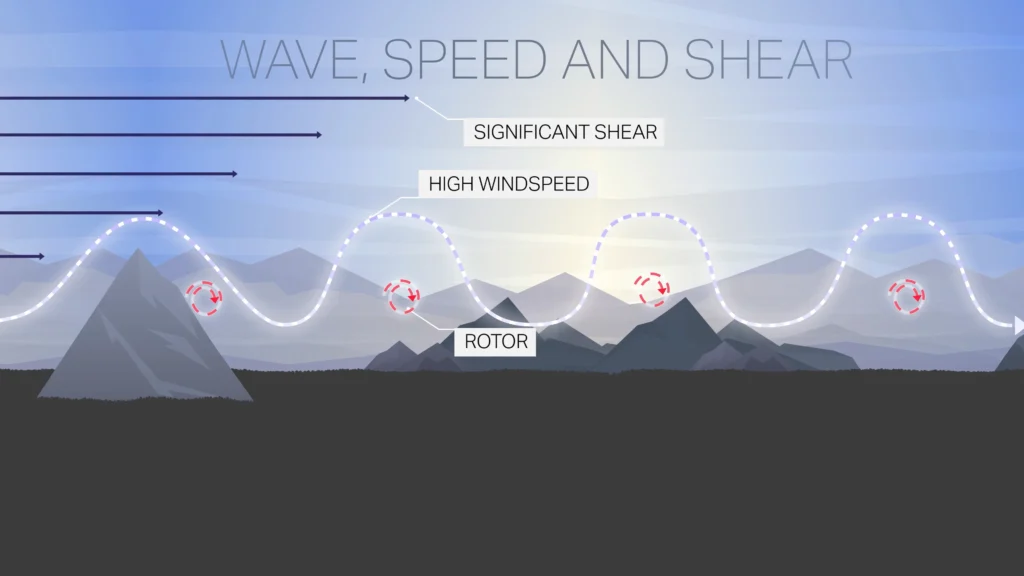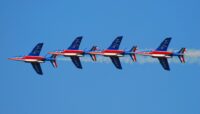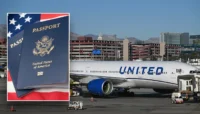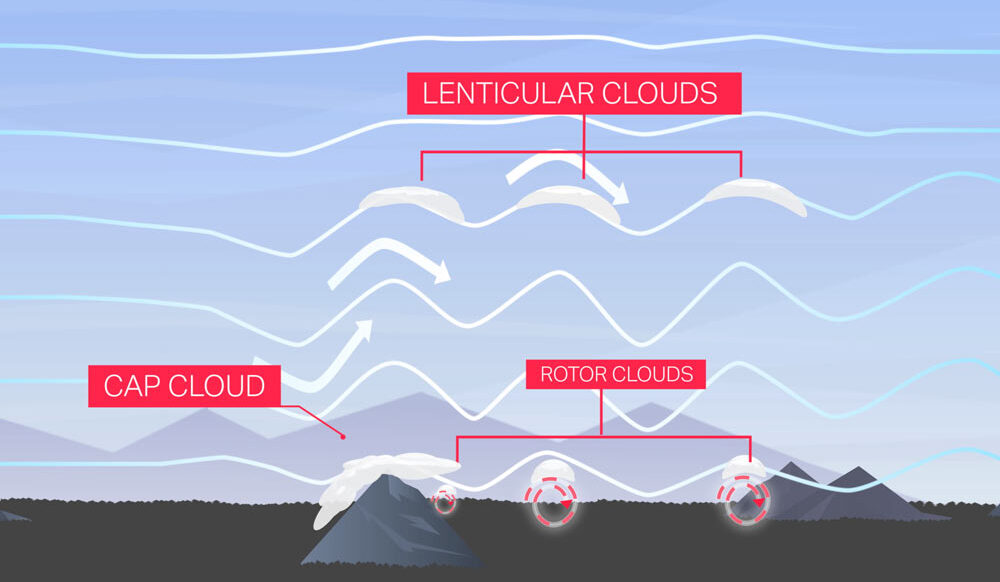Introduction
Mountain waves are a significant meteorological phenomenon that affect aviation, especially in regions with large mountain ranges. These atmospheric waves, created by strong winds flowing over mountains, can generate turbulence, strong updrafts, and dangerous downdrafts. Understanding mountain waves is crucial for pilots and air traffic controllers to ensure flight safety and operational efficiency.
What Are Mountain Waves?
Mountain waves, also known as orographic waves, occur when air flows over a mountain range and is forced upward. If the air is stable at higher altitudes, it oscillates vertically, creating a wave-like pattern. These waves can extend for hundreds of kilometers downwind of the mountains and persist for hours or even days.

Conditions Favorable for Mountain Wave Formation
Mountain waves typically develop under the following conditions:
- Strong Wind Flow: Wind speeds of at least 20 knots perpendicular to the mountain range.
- Stable Atmosphere: A layer of stable air above the mountain ridge that supports the oscillatory motion.
- Wind Shear: A change in wind speed or direction with altitude that enhances wave formation.
Impact of Mountain Waves on Aviation
Mountain waves pose multiple challenges to aviation, particularly for aircraft flying at low and cruising altitudes. These impacts include:
1. Severe Turbulence
- Rotor Turbulence: At lower altitudes, strong rotors can form, creating violent turbulence that can lead to aircraft structural damage and loss of control.
- Clear Air Turbulence (CAT): Even at cruising altitude, aircraft can experience strong turbulence without visible warning signs, leading to passenger injuries and aircraft deviation from flight paths.
2. Strong Updrafts and Downdrafts
- Sudden Altitude Changes: Mountain waves can produce extreme vertical air movements, causing rapid altitude gains or losses.
- Aircraft Performance Issues: These air movements can exceed an aircraft’s ability to compensate, making precise altitude control difficult.
3. Increased Fuel Consumption
- Constant Thrust Adjustments: Pilots must continuously adjust engine power to maintain altitude, leading to higher fuel burn.
- Rerouting Considerations: Airlines may need to plan alternate routes to avoid areas with strong mountain wave activity.
4. Wind Shear and Approach Challenges
- Landing and Takeoff Risks: Aircraft approaching or departing airports near mountain ranges, such as Denver (KDEN) or Innsbruck (LOWI), often face unpredictable wind shifts that challenge flight stability.
- Crosswind Effects: Mountain-induced winds can create dangerous crosswind conditions, increasing the difficulty of landing maneuvers.
Recognizing and Avoiding Mountain Waves
1. Weather Forecasting and Reports
- Pilots rely on SIGMETs, AIRMETs, and PIREPs to identify potential areas of mountain wave activity.
- Meteorological tools, such as satellite imagery and wind models, help predict wave strength and locations.
2. Flight Planning Considerations
- Altitude Selection: Flying at altitudes above or below the wave crest can help mitigate turbulence.
- Route Adjustments: Avoiding known mountain wave-prone areas, when possible, enhances flight safety.
3. Pilot Techniques for Handling Mountain Waves
- Avoid Overcorrecting: Sudden control inputs can worsen instability; smooth adjustments are recommended.
- Increase Awareness: Monitoring aircraft speed and altitude trends helps anticipate wave encounters.
- Prepare for Turbulence: Securing cabin items and ensuring passenger seatbelt compliance reduce injury risks.
Mountain waves are a well-documented yet challenging weather phenomenon in aviation. Their ability to generate turbulence, updrafts, and downdrafts necessitates careful planning and awareness from pilots and air traffic controllers. Through proper forecasting, strategic flight planning, and effective in-flight handling, the risks associated with mountain waves can be mitigated, ensuring safer and more efficient flights.








